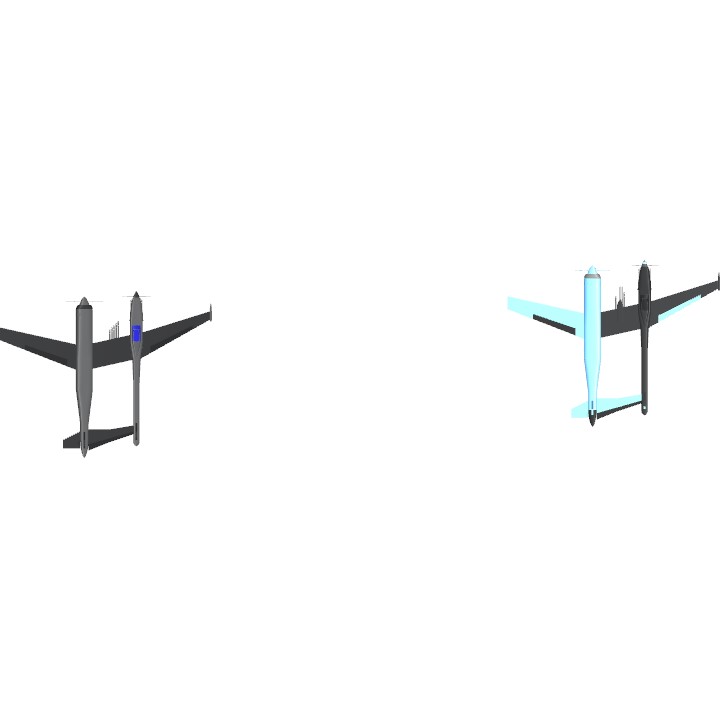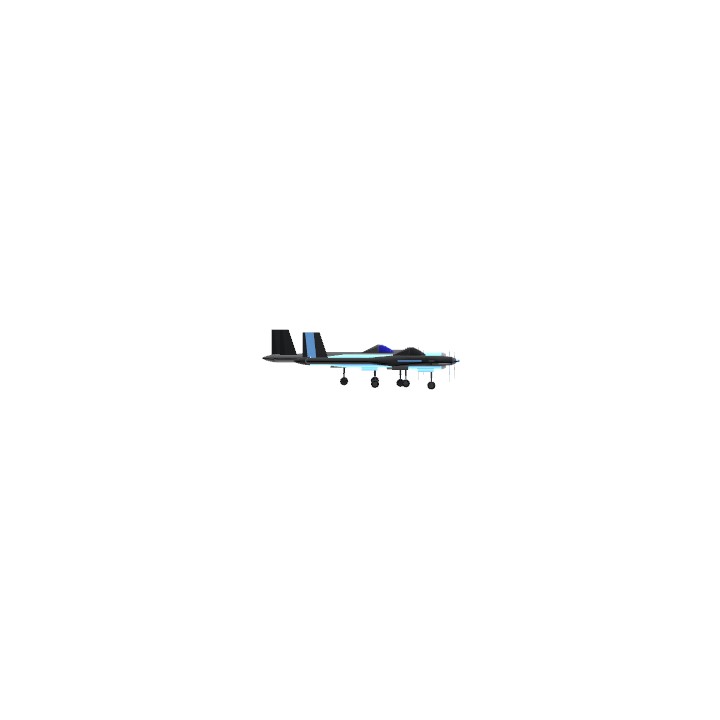A remake of the old Rungu, that lore-wise replaces the old A version. While this modification has greatly improved both looks and handling, it's still somewhat horizontally unstable and has suffered a very slight drag increase. Now in two paintjobs!
The Rungu, so called to keep a theme with a pre-Crumbling experimental asymmetrical aircraft of similar shape, is one of the CIR's most iconic fighters and a particularly unusual airframe. It's typically used as a long-range escort and intruder aircraft, often in air superiority or interdiction missions. It's peculiar design is intended to produce a high-performance aircraft, high-endurance aircraft without increasing demand for high-performance engines. It's armament consists of a standard 2 10 mm HMGs synchronized with the starboard engine and 5 18 mm autocannons. These can be replaced by a gun pod with 2 27 mm cannons or a combination of other armaments.
The secret to the Rungu's durability belies in two factors: not only does it turn it's entire main fuselage into a fuel tank, but it is more than overpowered enough to gain altitude on either engine, though the auxiliary inline provides worse handling as a single power source.
While the 27 mm caliber was based on those used by the pre-Crumbling BK 27 aircraft cannons, the others were created post-Crumbling during a major war: The 10 mm caliber was developed to be used in lighter HMGs that could be better carried on foot in mountainous terrain, and the 18 mm cannons were originally developed as a low-pressure weapon that could use existing shotgun slug and barrel production, these weapons being popular in CIR auxiliary militias. Both have since overtaken their originals for reasons of cost and ballistic performance respectively.
Specifications
General Characteristics
- Created On Windows
- Wingspan 138.9ft (42.3m)
- Length 37.8ft (11.5m)
- Height 11.5ft (3.5m)
- Empty Weight 5,666lbs (2,570kg)
- Loaded Weight 8,995lbs (4,080kg)
Performance
- Horse Power/Weight Ratio 0.3
- Wing Loading 43.5lbs/ft2 (212.3kg/m2)
- Wing Area 206.9ft2 (19.2m2)
- Drag Points 2033
Parts
- Number of Parts 48
- Control Surfaces 6
- Performance Cost 617






